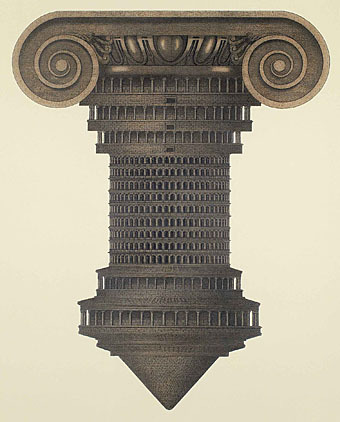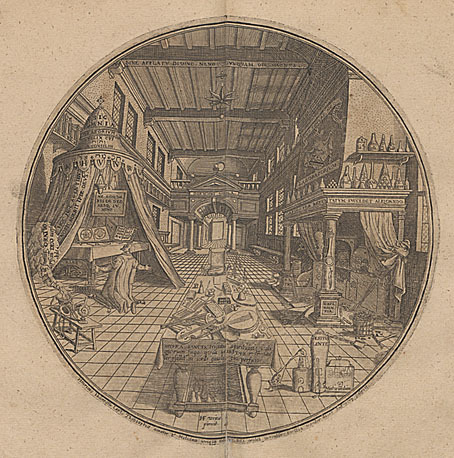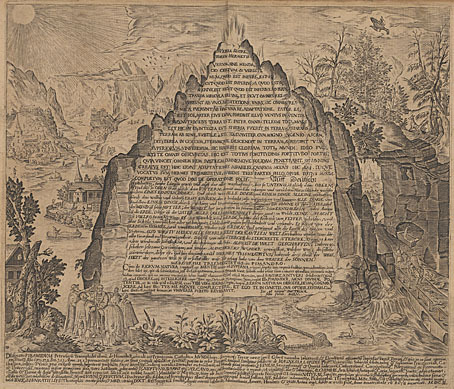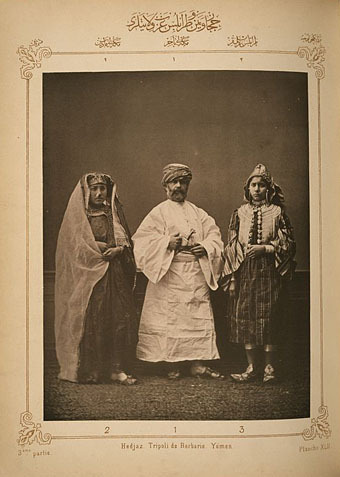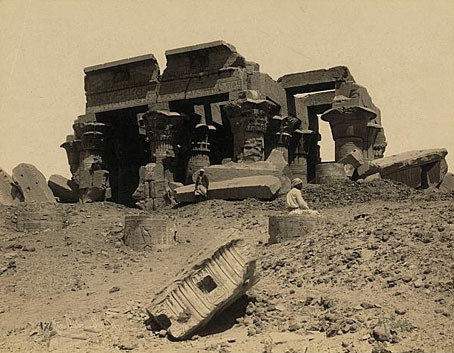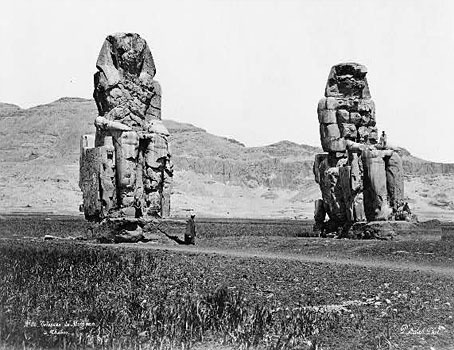John Coulthart's Blog, page 317
March 5, 2011
Weekend links
Star City by Tomislav Ceranic.
• Noted in the blogosphere this week: A Journey Round My Skull underwent a transmutation into 50 Watts; a blog devoted to artist, designer & illustrator Jessie M King; "The arts and musicks of the supranatural" at Secret Lexicon; From the Farm, Railroads, Sewing Machines & Beyond, lengthy reminiscences from a long life in America.
• Barney Bubbles in Wonderland, in which the designer and his chums indulge in some Carrollian shenanigans somewhere in the 1960s. The resulting footage is now a promo video for Balloon Race by Bear Driver.
• HP Lovecraft's favourite words, the desert island books of Jorge Luis Borges, a profile of Christopher Isherwood, and Edward Gorey again.
[Arthur] Machen explicitly talks about the strength of London, as opposed to Paris, in that London is more chaotic. Although he doesn't put it in these words, I think what partly draws him to London is this notion that, in the absence of a kind of unifying vision, like Haussmann's Boulevards, and in a city that's become much more syncretic and messy over time, you have more room to insert your own aestheticizing vision.
China Miéville in a great interview at BLDGBLOG.
• Matryomin is "the unique, original erectronic [sic] musical instrument invented by Masami Takeuchi in 2000″. Yes, a theremin inside a Russian doll. The Mable ensemble playing Duke Ellington's Caravan is, well…I'm still speechless. And there's also this.
• Conductor turns the New York subway system into an interactive string instrument.
Discordia by Tomislav Ceranic.
Amazingly enough, prostitution was legal during the Victorian period. There were tons of brothels all over the major cities of England, and of all different kinds. There were lots of flagellation brothels; these were places where primarily men would go to be whipped by women or by men. There were also gay male brothels. You could go to a park in London at night, pick up what were called the "park whores" and give them a very small amount of money to have sex openly in the park. I also write about gay "cruising," which was quite common. If you knew the right place to go and knew the right signals, you could pick up a man on the street and have sex in an alley.
Deborah Lutz is interviewed about her book Pleasure Bound: Victorian Sex Rebels and the New Eroticism.
• Cult-ure: Ideas can be dangerous, a book by Rian Hughes.
• Chernobyl: Europe's strangest wildlife refuge.
• The Eadweard Muybridge Online Archive.
• Caravan (1959) by Martin Denny | Caravan (1961) by 80 Drums Around The World | Caravan (1962) by Sir Julian | Caravan (1965) by The Ventures | Caravan (1973) by Enoch Light & The Light Brigade | Caravan (1997) by Jimi Tenor (I could go on and on, yes I could…)
March 4, 2011
Deutsche Kunst und Dekoration #10: Turin and Vienna

Turin exposition poster by Leonardo Bistolfi.
Part two of a two-part skate through the contents of volume 10 of Deutsche Kunst und Dekoration, the German periodical of art and decoration. In addition to the Heinrich Vogeler feature which was the subject of yesterday's post, this edition includes articles on the Prima Esposizione Internazionale d'Arte Decorativa Moderna in Turin—another international showcase for the Art Nouveau style—and a feature on the Viennese Secession exhibition of the same year. This latter piece was especially fascinating when seeing such a notable event reported for the first time. There's more about that below. This volume also includes a piece on the Glasgow Arts and Crafts movement but the photos for that piece are poor quality. As before, anyone wishing to see these samples in greater detail is advised to download the entire volume at the Internet Archive. There'll be more DK&D next week.

A feature on dress design shows some rare examples of Art Nouveau style being applied to clothing.


Modernism begins here. I love the Secession artists, and as I said above, it's fascinating seeing an event like the Beethoven exhibition being reported as news. The exhibition was staged in Joseph Maria Olbrich's Secession building in Vienna, a radical "temple of art" and the forerunner of all later white cube gallery spaces. This was a themed exhibition—itself a relatively new idea—which took Max Klinger's Beethoven sculpture as its central work; the contributions of the other artists were all intended to complement this. Most famous of these were the Beethoven-themed paintings by Gustav Klimt which were arranged as a frieze inside the building.

Another great pleasure of this edition of DK&D is the attention they devote to all aspects of the exhibition. Klinger's sculpture is usually reproduced in books in a single view; here we get to see it in detail from many different views. So to with the minor works by other artists which adorned walls and doors. Many of these pieces are very advanced for 1902, showing once again how the tendency to abstraction in western art was absolutely inevitable from whichever direction it came. The radical qualities of the Secession came through in their painting, architecture and especially in the graphic design which featured in their showcase magazine, Ver Sacrum, and the posters produced by Koloman Moser, Alfred Roller, Otto Wagner and others. Something to note here is how every contributing artist was given a stylised monogram as a means to identify their work. These examples are only a few of those shown in the journal.








The great Gustav. Klimt's work has now attained that dubious Impressionist-infested realm of Art-for-people-who-don't-really-care-much-for-art, a place where once-challenging paintings are reduced to a kind of visual muzak. The ubiquity of his work today obscures its radical qualities, and also his presence at the heart of an art movement with very lofty ideals indeed. The Secessionists wanted to change the world with their art, hence the choice of Beethoven as a venerable predecessor; Klimt himself later admitted that their plans had failed but one has to wonder what he would have thought about his paintings becoming such a fixture of the greetings card market.


A plan of the Secession building showing the route visitors were supposed to take through the exhibition.

A feature about the Turin exposition begins here and is continued in the next volume. The exposition also had lofty ideals with a pronouncement that "Only original products that show a decisive tendency toward aesthetic renewal of form will be admitted. Neither mere imitations of past styles nor industrial products not inspired by an artistic sense will be accepted." The entrance above was design by Raimondo D'Aronco.

The entrance to the German pavilion, and a typical example of Teutonic bluster. If you overlook the pomposity and sense of foreboding such a gateway inspires (the First World War was only twelve years away), the interior featured some beautiful and original designs, some of which will be seen in the next installment.

Previously on { feuilleton }
• Deutsche Kunst und Dekoration #10: Heinrich Vogeler
• Deutsche Kunst und Dekoration #9
• Deutsche Kunst und Dekoration #8
• Deutsche Kunst und Dekoration #7
• Deutsche Kunst und Dekoration #6
• Deutsche Kunst und Dekoration #5
• Deutsche Kunst und Dekoration #4
• Deutsche Kunst und Dekoration #2
• Deutsche Kunst und Dekoration #1
• Deutsche Kunst und Dekoration
• Jugend Magazine revisited
• Secession posters
March 3, 2011
Deutsche Kunst und Dekoration #10: Heinrich Vogeler

Continuing the delve into back numbers of Deutsche Kunst und Dekoration, the German periodical of art and decoration. Volume 10 covers the period from April to September 1902. There's so much of interest in this edition I thought it worth making a two-part post. The number opens with a substantial piece devoted to artist and illustrator Heinrich Vogeler (1872–1942) whose edition of Oscar Wilde stories was featured here a while ago. One of the pleasures of this journal is the attention they devote to overlooked artists. Vogeler has an unusual and distinctive style, playful and florid, and with the same enthusiasm for filling the paper with tiny details as later illustrators such as Harry Clarke. Some of these illustrations are for fairy stories, others for more adult fare; peacocks abound. The article also has examples of his painted work although I find his line drawing to be of greater interest. As before, anyone wishing to see these samples in greater detail is advised to download the entire volume at the Internet Archive. Part two follows tomorrow.
















Elsewhere on { feuilleton }
• The illustrators archive
Previously on { feuilleton }
• Deutsche Kunst und Dekoration #9
• Deutsche Kunst und Dekoration #8
• Deutsche Kunst und Dekoration #7
• Deutsche Kunst und Dekoration #6
• Deutsche Kunst und Dekoration #5
• Deutsche Kunst und Dekoration #4
• Deutsche Kunst und Dekoration #2
• Deutsche Kunst und Dekoration #1
• Deutsche Kunst und Dekoration
• Jugend Magazine revisited
• Heinrich Vogeler's illustrated Wilde
March 2, 2011
Ludwig's Winter Garden
Another monarch, and another glass-canopied hothouse. The extravagances of Ludwig II of Bavaria have featured here before but I'd overlooked the Winter Garden he had built in 1871 on the roof of the Munich Residenz, the home of the Bavarian royal family when they were in the capital. The views here are by court photographer Joseph Albert, and there isn't much else online apart from this page at the palace website where we can see another Albert photo, and a painting by Julius Lange showing the idealised vision the king would have had in mind. With its painted scenery, "Moorish" tent, and artificial lighting—including rainbow and moonlight effects—Ludwig's garden looks back to the exotica of the Royal Pavilion at Brighton, and also ahead to our current crop of theme parks and fantasy worlds. The Winter Garden was demolished after Ludwig's death but the Residenz still contains other splendours, not least the jaw-dropping excess of the Antiquarium.
Previously on { feuilleton }
• The Schönbrunn Palm House
• The Royal Greenhouses of Laeken
• Arcades panoramas
• Arcades
• Schloss Falkenstein
• Schloss Linderhof
• Schloss Neuschwanstein
• Passage des Panoramas
• Passages 2
• Passages
March 1, 2011
The Schönbrunn Palm House
Photo by Roberto Verzo.
If the Schönbrunn Palm House, Vienna, lacks the elegance of Alphonse Balat's beautiful Winter Garden in Brussels, the structure does have a distinct style of its own. Roberto Verzo's Flickr views manage to hide the visitors and background details, giving the impression that the building might be larger than it is. Much as I'd love these places to have a Piranesian grandeur à la Schuiten the reality is somewhat diminished. The Palm House was built in the 1880s from a design by Franz Xaver Segenschmids, and is another royal palace adjunct. According to the Schönbrunn palace website this one is more visitor-friendly than the Laeken greenhouses, being open to the public all year round.
• The Schönbrunn Palm House at Wikimedia Commons
• The Schönbrunn Palm House at Flickr
Photo by RobertG.
Photo by Friedrich Böhringer.
Previously on { feuilleton }
• The Royal Greenhouses of Laeken
• Arcades panoramas
• Arcades
• The art of François Schuiten
• Passage des Panoramas
• Passages 2
• Passages
February 28, 2011
The Royal Greenhouses of Laeken
The Winter Garden, photo by William Helsen.
My arcades fetish has been aired here a few times to which one might add a complementary fetish for iron-and-glass structures in general, especially railway stations, palm houses and winter gardens. The Royal Greenhouses at Laeken, Brussels, are an impressive example of the latter, even if they happen to owe their existence to King Leopold II whose barbaric exploitation of the Congo is recounted in Joseph Conrad's Heart of Darkness. Alphonse Balat was the architect of the central Winter Garden built between 1874 and 1876, and reading up on him it turns out that the celebrated Art Nouveau architect Victor Horta was one of Balat's apprentices. Horta never had the opportunity to create anything this extravagant, unfortunately, but if he had the results may have resembled one of the structures created by François Schuiten for his greenhouse city of Calvani (below), a metropolis of the Obscure World. Schuiten is a resident of Brussels and we're told that one of the earthly "Passages" to the Obscure World can be found at the Royal Greenhouses. The building is only open to the public during April and May each year, however, so anyone looking for a route to Schuiten's world may be better off searching elsewhere.
• The Royal Greenhouses at Wikimedia Commons
• The Royal Greenhouses at Flickr

Calvani by Schuiten.
The Winter Garden dome, photo by Jean-Pol Grandmont.
Photo by Roman Bonnefoy.
Previously on { feuilleton }
• Arcades panoramas
• Arcades
• The art of François Schuiten
• Passage des Panoramas
• Passages 2
• Passages
February 27, 2011
Amphitheatrum Sapientiae Aeternae
Laboratorium.
More alchemical business which should be familiar to anyone who's cracked open an occult history or two. Familiar as these illustrations often are, it's only recently that we've been able to scrutinise their mysteries in detail thanks to the services of various libraries and online archives. These plates are from Amphitheatrum Sapientiae Aeternae (1609) by Heinrich Khunrath, and the Laboratorium is often reproduced as a rather grand example of the alchemist's workplace. As for the picture below, it's a shame it didn't turn up a few years ago when Jay Babcock asked me if I had a decent copy of the illustration for an Arthur magazine article. All I had was a tiny reproduction so I think the piece ran without the picture in the end. The ETH Bibliothek has further illustrations from this volume including a portrait of Meister Khunrath and his pet hound.
Another tip via the BibliOdyssey Twitter feed.
Designatio Pyramidum.
Elsewhere on { feuilleton }
• The etching and engraving archive
Previously on { feuilleton }
• Cabala, Speculum Artis Et Naturae In Alchymia
• Digital alchemy
February 26, 2011
Weekend links
Nite Flights (1978) by The Walker Brothers. Cover design by Hipgnosis.
something attacked the earth last nite
with a kick that man habit-eye
cut the sleep tight boys who dreamed and dreamed
of a city like the sky
Scott Walker quotes Brion Gysin (and who knows what else) in Shutout (see below), one of the four remarkable songs he wrote for the final Walker Brothers album, Nite Flights. That album cast a shadow over David Bowie's Lodger a year later, and led Bowie to try his hand at a cover of the title track in 1993.
• Frédéric Chaubin's photographs of what he calls Cosmic Communist Constructions. Also a new book from Taschen, and an exhibition at the Karlsruhe Museum of Contemporary Art. PingMag interviewed Chaubin back in 2006.

From Disparate works by Romanian artist Marcel Chirnoaga (1930–2008). See also the Virtual Museum of Marcel Chirnoaga.
The immense size of modern databases gives us a feeling of meaninglessness. Information in such quantities reminds us of Borges's library extending infinitely in all directions. It is our task as humans to bring meaning back into this wasteland.
Freeman Dyson on The Information: A History, a Theory, a Flood by James Gleick.
• In the Tumblr labyrinth this week: Mr Rossignol, the Elephant House for Edward Gorey, and Brion Gysin.
• Related to the last, Mutate or Die is "a bioart project being conceived of and executed by Tony Allard and Adam Zaretsky".
• Barry Miles's top 10 counterculture books. Related: Rick Poynor on Richard Neville's Playpower.
"The sooner literary fiction recognises & accepts its generic identity, the sooner it can get help."
• Is YouTube user "Kosinski" the ever-elusive Chris Marker? "All signs point to yes."
• The Internet Archive is making its books available to US libraries.
• The Castle of Shadows at BLDGBLOG.
• The Light Painting Pool at Flickr.
• Scott Walker (with the Walker Brothers): Shutout | Nite Flights | The Electrician.
February 25, 2011
The recurrent pose #40
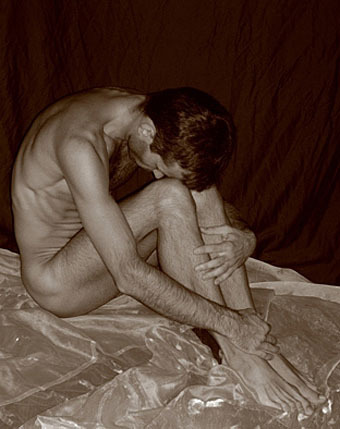
Another addition to the burgeoning archive of you-know-what, the Flandrin pose on this occasion being by Egon from JKK Fine Arts. He also sent details of some new photobooks, the image below being an example from The Blue Book. There's also Narcissus and Homage to Egon Schiele. Thanks Egon!
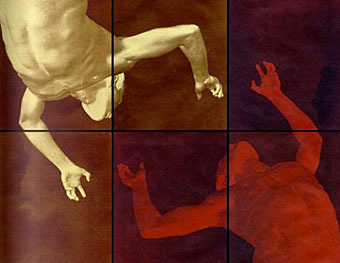
Elsewhere on { feuilleton }
• The recurrent pose archive
February 24, 2011
Pascal Sébah
Studio portrait of models wearing traditional clothing from the provinces of Hedjaz (Hejaz), Yemen and Tripoli, Ottoman Empire (1873).
Photo prints by Turkish photographer (1823–1886) at the Library of Congress. I always like to see photos of ruins in the wild, so to speak, as they generally were in the 19th century before the imperatives of archaeology and mass tourism had cleaned, restored and reduced everything to the status of a museum exhibit or (in the case of the temple below) a shopping opportunity. There's more of Pascal Sébah's work at Wikimedia Commons.
Kôm Ombo (Sud Est) (The ruins of the Temple of Sobek and Haroeris at Ombos, Egypt, between 1860 and 1886).
Colosses de Memnon à Thèbes (between 1860 and 1890).
Previously on { feuilleton }
• Alhambra cyanotypes
• Constantinople, 1900
• Edinburgh, 1929
• Old Bunker Hill
• Inondations 1910
• Berenice Abbott
• Eugene de Salignac
• Luther Gerlach's Los Angeles
• The temples of Angkor
• The Bradbury Building: Looking Backward from the Future
• Edward Steichen
• Karel Plicka's views of Prague
• Atget's Paris
• Downtown LA by Ansel Adams
John Coulthart's Blog
- John Coulthart's profile
- 31 followers


